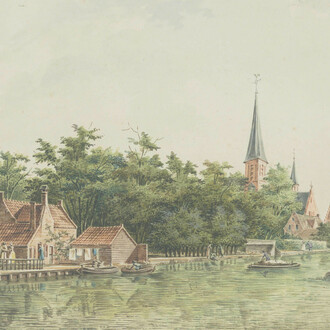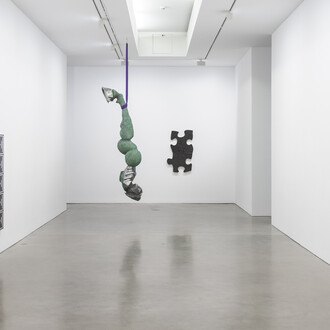The exhibition presents an exceedingly elaborate example of Neoclassical furniture in all of its individual parts. Their detailed virtuosity poses general questions about technique and workmanship as well as about aesthetic qualities of furniture design, revealing the essence of the art of furniture making: the timeless pleasure in elegantly curved veneer surfaces, in the artful presentation of the natural material of wood and in the mechanics of transformability as it still exists in part in today’s technically and industrially shaped furniture production.
The exhibition focuses on a secretary desk made in Berlin around 1835 by the ébéniste Joseph Schneevogl and now in the collection of the Prussian Palaces and Gardens Foundation Berlin-Brandenburg. Its masterful mahogany veneering with arched and spherically curved surfaces adeptly draws attention to the beauty of the material. The desk not only represents the summit of the art of Prussian furniture making but also marks the conclusion of handcrafted production methods and preindustrial material culture. It documents a specific approach to consumption, the appreciation of which is little more than a remote nostalgic memory today.
Further sections of the exhibition are devoted to Schneevogl’s otherwise hardly noticed oeuvre, the history and material iconography of mahogany in the light of the colonial past and the elaborate techniques employed in the veneering process. Related examples of modern furniture design featuring three-dimensionally veneered surfaces (especially seating furniture) are showcased along with contemporary handcrafted furniture and selected objects from the Kunstgewerbemuseum’s permanent exhibition.
The exhibition features loans from private collections, the Prussian Palaces and Gardens Foundation Berlin-Brandenburg, Danzer Deutschland GmbH, the Botanisches Museum Berlin, the Ibero-Americanisches Institut and the Staatsbibliothek, both institutions of the Stiftung Preußischer Kulturbesitz. The masterpieces produced by two contemporary master carpenters from Berlin are on display in the show that additionally encompasses two projects. The wood conservation and restoration study programme at the University of Applied Sciences Potsdam is presenting a reconstruction of historical veneer techniques and the Technical College for Woodcarving and Carpentry Berchtesgaden follows in the footprints of Joseph Schneevogl with its current carpentry activities.
An international conference is planned for February 2019, which – oriented on the sections of the exhibition – invites the participation of art historians, makers of handcrafted and industrial furniture, designers, art dealers, conservators and friends of the art of furniture.
















